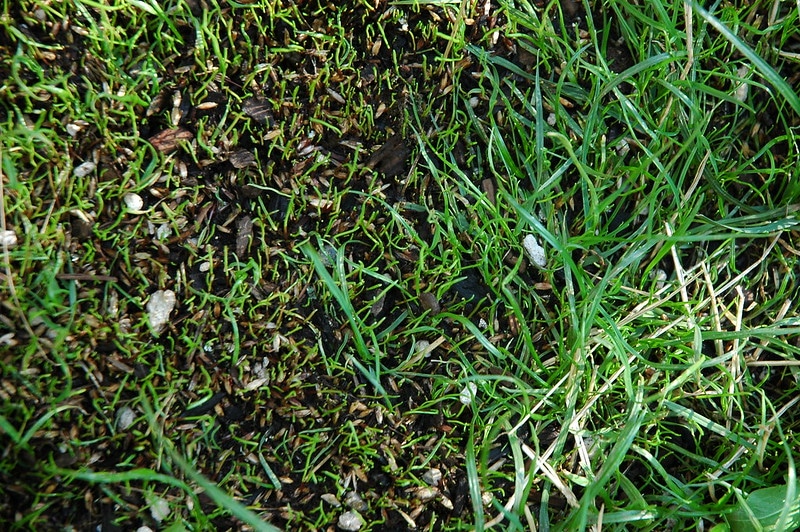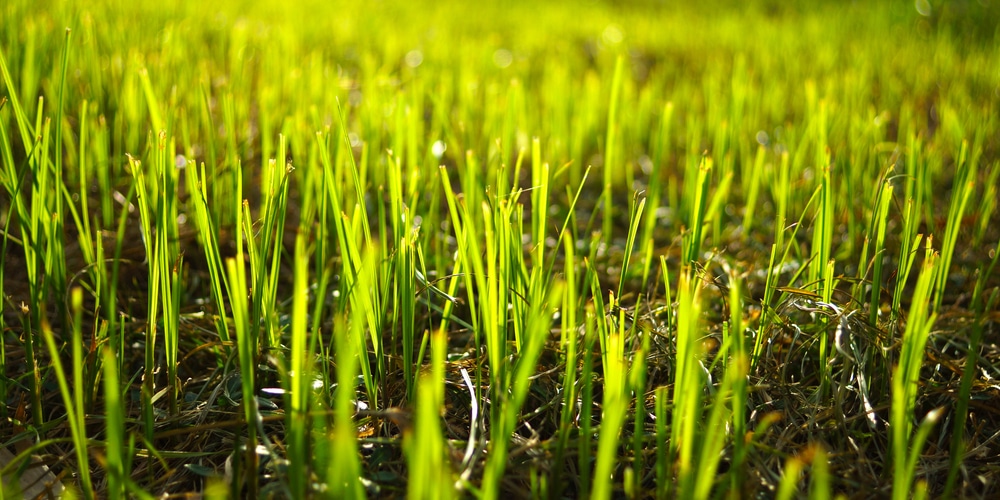It is not a mystery that taking care of a lawn takes plenty of time and work from your side. Besides the “traditional” tasks that may come to mind (such as watering, feeding, and mowing your grass), you will have to deal with overseeding. But some gardeners have some confusion about the practice.
While overseeding is essential to maintain a healthy and lush lawn, the truth is that not many people are familiar with it. And if you are wondering: “should I bag my grass clippings after overseeding?” keep reading. We collected everything you must know about it in this essential guide!
What is Overseeding?

Overseeding a lawn is a practice that allows you to rejuvenate your grass. It involves spreading new seeds over your grass to make it thicker, greener, and lusher.
You can use a spreader, a roller, or even a hose. But the substance of the practice doesn’t change: you create a new layer of grass that will germinate quickly. Also, it will keep weeds at bay and minimize insect damage.
When you need to overseed, you’ll have to cut your lawn short: doing so will increase the seeds’ chances of touching the soil and rooting. Additionally, you’ll have to mow the grass again as the seeds germinate! To do so, you may have to wait a couple of weeks. But in both cases, as you cut the grass, you’ll be left with clippings or the remains of the lawn you cut.
But what do you do with them? Should you leave them where they are or throw them? Jump to the following sections to find out!
Should I Bag My Grass Clippings After Overseeding?

The answer to this question depends on the conditions of your lawn. For instance, if you have been dealing with weeds, we suggest not leaving the clippings around your garden. Doing so might spread the noxious grasses even more in your yard.
However, if your grass isn’t affected by diseases and weed infestations, not bagging your grass clippings comes with several benefits. Here’s what you need to know before deciding what to do for your garden. But don’t forget that deciding what to do with clippings depends on your preferences. After all, none can make these decisions for you!
When Should You Bag Your Grass Clippings
Throw away grass clippings when you are aware of a weed infestation. The same applies if you know your lawn has problems with fungus or pests. And to prevent the spread of diseases and weeds overtaking your garden, dispose of all the clippings properly.
Indeed, failing to do so might result in several issues. To begin with, you’ll have an infestation to take care of. And dealing with them is not fun, especially since weeds can be challenging to remove. Additionally, they might spread to other parts of the garden, which can be frustrating.
But besides that, if you don’t like dealing with a messy lawn for as long as it takes for the clippings to decompose, you should remove them. In those cases, it isn’t necessary to throw them away. Indeed, you can let them dry and use them as mulch or compost in the future.
Alternatively, you can rake them into a pile somewhere on your lawn that doesn’t affect you too much. And if you don’t want to use clippings in your garden, you should consider giving them to other gardeners, who may appreciate the gesture and use the clippings to provide their plants with extra (organic) nutrition.
Why Should You Leave Grass Clippings Where They Are?
The reasons for bagging clippings up aren’t many. However, leaving them will bring you plenty of benefits. To begin with, it will save you from the extra work of having to remove them from your lawn.
Additionally, they might provide your grass with extra nutrition and save money and time when fertilizing your lawn. Plus, you can use clippings as mulch to increase water retention. And this may come in handy in the summer (especially if you live in a hot and dry region).
If you expect rain, consider bagging them and spreading them on your lawn on a dry day. Doing so will prevent waterlogging and rotting.